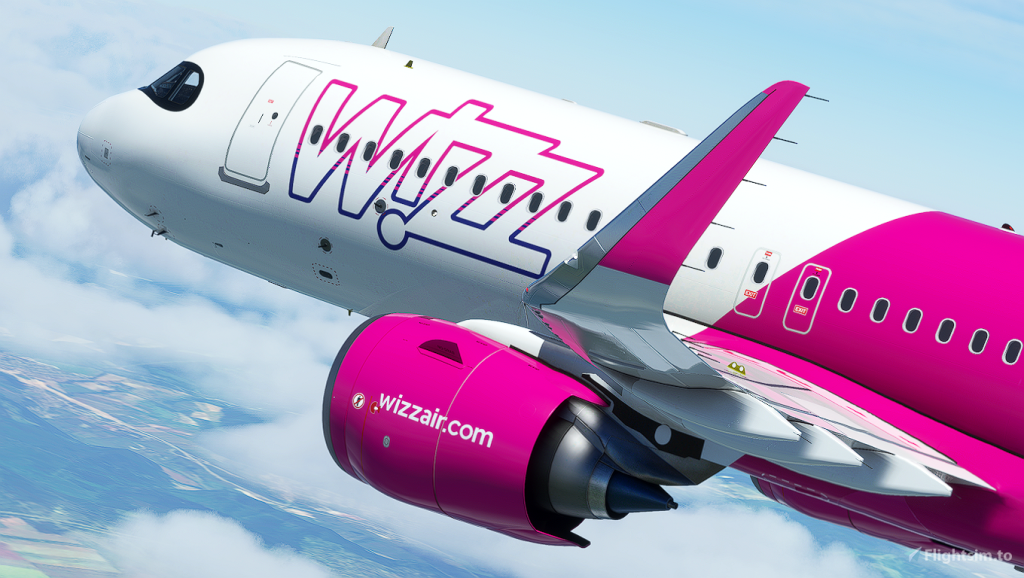Wizz Air is set to launch new long-haul routes using its upcoming Airbus A321XLR.
The first flights, a seven-hour trek, will start in March between London and Jeddah, Saudi Arabia.
Wizz Air will offer significantly cheaper fares compared to competitors like British Airways.
Low-cost carrier Wizz Air is banking that price-sensitive customers will book its new no-frills narrowbody planes to save money on long-haul flights — and it’s not being shy about the cabin.
The Hungarian carrier announced in September that its first Airbus A321XLR flight would start in March, trekking seven hours between London Gatwick and Jeddah, Saudi Arabia. Wizz has also scheduled a similar-length A321XLR route between Milan and Abu Dhabi from June.
The new A321XLR jet has gained hype for its extended range that can reach 5,400 miles, or 11 hours, nonstop — opening new route opportunities previously unreachable or unprofitable for airlines.
Wizz has opted for the same high-density, all-economy cabin it uses on its A321neos for its future A321XLR fleet, which it believes customers will be willing to tolerate for cheap tickets.
“15, 20 years ago, I thought three hours would test passenger tolerance, and then we pushed it to six hours, and we are still fine,” Wizz CEO József Váradi said during a September press conference in London. “You kind of suffer the pain, if you wish, for the economic benefits that you are deriving from the transaction.”
The carrier’s London to Jeddah ticket prices start at about £135 (about $180) one-way — about one-third the fare of British Airways. Milan to Abu Dhabi starts at about £110 (about $145) one-way, more than half the price of UAE-based Etihad Airways, which also flies the route.
Wizz’s new long-haul flights on the A321XLR won’t even come with free water.
Airbus developed the A321XLR as a long-haul workhorse.
The A321XLR answers airlines’ demand for smaller aircraft that can shuttle more people further than ever before. The new narrowbody has an extra fuel tank that extends its range, flying about 800 miles further than its A321neoLR (long-ranged) predecessor.
This means it can open more airline route options, particuarly on lower-demand city pairs that can’t profitably fill a widebody plane.
The European Union Aviation Safety Agency certified the A321XLR for passenger flights in July, and it’s nearing approval from US regulators. The A321XLR’s first customer is Spanish flag carrier Iberia, which is scheduled to fly between Madrid and Boston in November.
Wizz said the A321XLR will mirror its A321neos.
Wizz Air uses an all-Airbus fleet, which helps save money on things like labor and maintenance.
The fleet consists of several A320 variants, including the previous-generation A320-200 and A321ceo and the next-generation A321neo.
The modern A321XLR will be the carrier’s longest-ranged aircraft but fit with the same layout as its A321neo, which it already flies on routes exceeding six hours.
The A321XLR will offer minimal legroom and no recline.
Wizz Air uses an all-Airbus fleet, which helps save money on things like labor and maintenance.
The fleet consists of several A320 variants, including the previous-generation A320-200 and A321ceo and the next-generation A321neo.
The modern A321XLR will be the carrier’s longest-ranged aircraft but fit with the same layout as its A321neo, which it already flies on routes exceeding six hours.
The A321XLR will offer minimal legroom and no recline.
Unlike mainline carriers like British Airways and Etihad Airways, which Wizz will directly compete with on its A321XLR routes, the low-cost airline charges for everything beyond an unassigned seat and a personal item.
This means larger carry-on bags, food, and even water will be a fee — so its recommended passengers prepare by bringing their own snacks and water.
“When you take a legacy carrier and you get a coffee for free, that is probably the most expensive cappuccino in your life,” Varadi said. “We don’t want to do that.”
According to Wizz’s online menus, food bundles starting at £8 (about $11) include a sandwich, drink, and snack. Soups start at £3.70 (about $5), while a water bottle costs £3.20 ($4.25). Alcohol, chips, and coffee, among other items, are also on sale.
An oversize personal item will cost £48 (about $64) at the gate.
Most ultra-low-cost carriers allow a personal item for free, but it has to fit within specific dimensions. For Wizz, that is 40 x 30 x 20 cm with a 10-kilogram (22-pound) weight limit.
Wizz’s website said customers who show up to the gate with a personal item that exceeds the size limit will have to pay a £48 fee. Pre-paid carry-one bags can be up to 55 x 40 x 23 cm but have the same weight restriction as personal items.
Checked bags of varying weight, as well as sports equipment, can also be purchased for an additional fee.
There is no inflight entertainment or WiFi.
The A321XLR has secured more than 550 orders worldwide from budget and mainline airlines alike, meaning it can fit into both business models.
Wizz is an example of the A321XLR’s budget layout. However, carriers like American Airlines and United Airlines plan to install multi-class cabins with lie-flat beds in business class.
Further, the mainline A321XLR economy cabins will sport reclining seats, inflight entertainment, and standard legroom — though customers likely won’t be able to take advantage of the same savings offered by Wizz.



